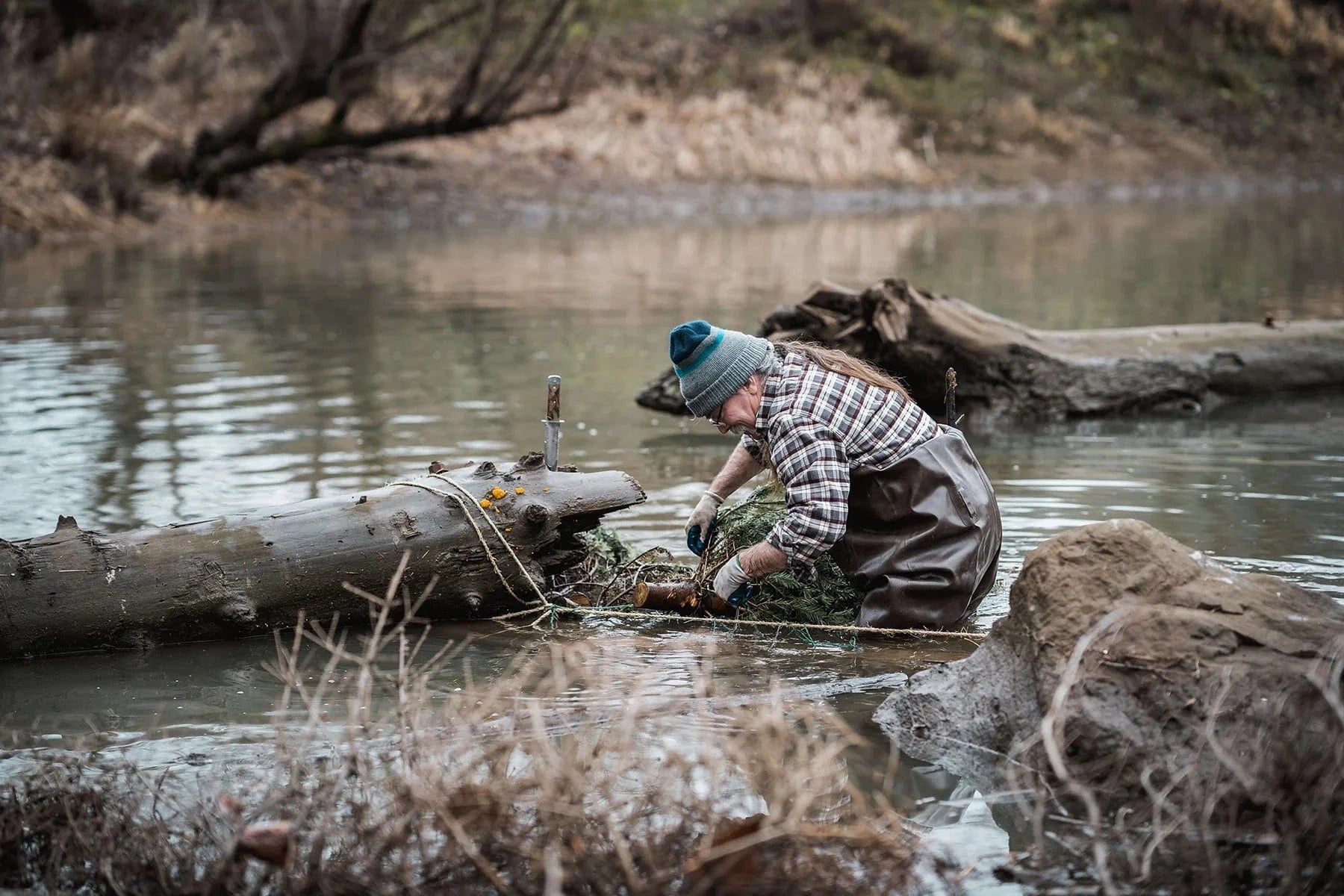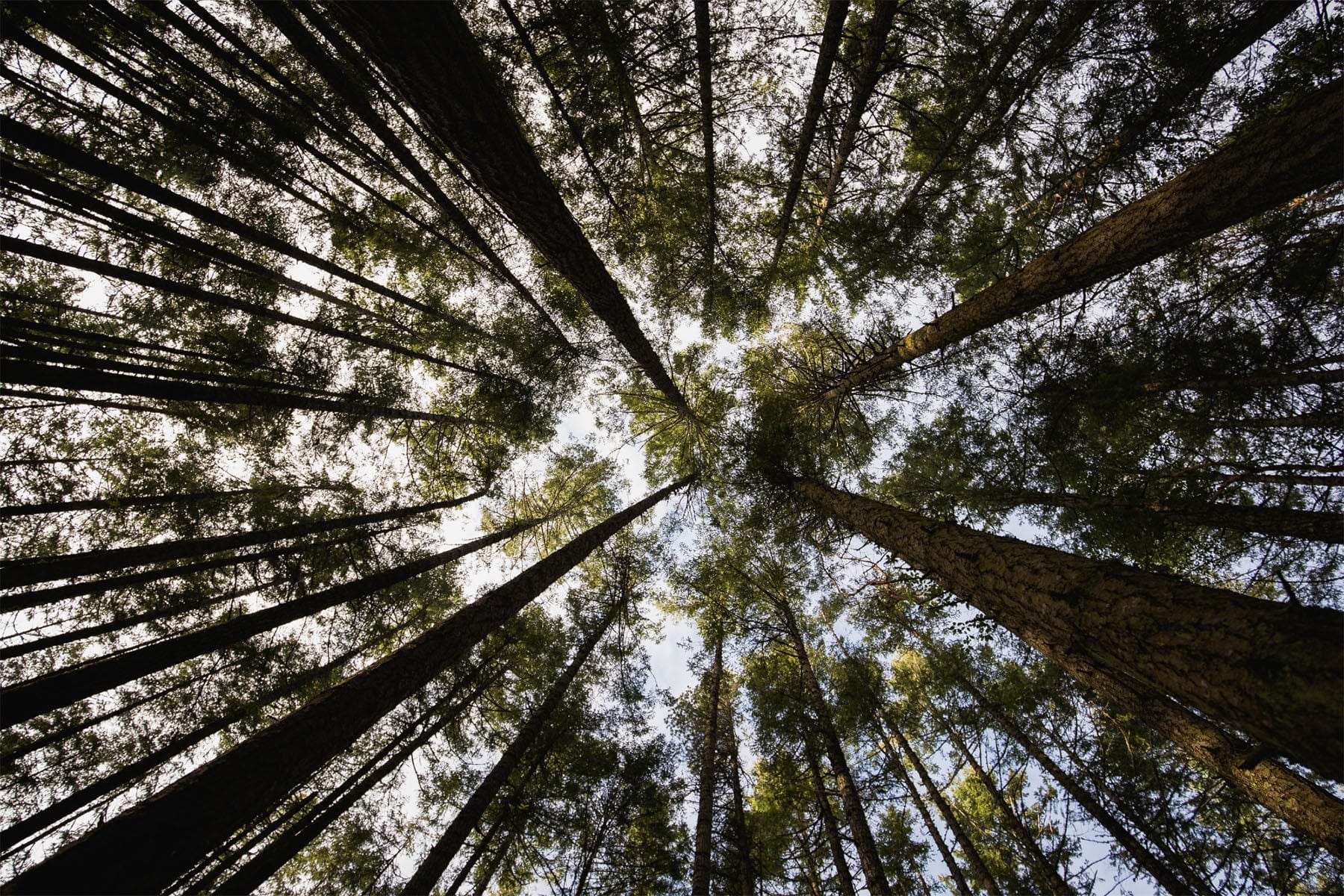Orcas, Salmon, and Trees: A Film & Conservation Initiative

Get news, updates, & event Info delivered right to your inbox:
Plant a Tree, Help an Orca
Southern Resident orcas, often referred to as killer whales, are an icon of the Pacific Northwest. Swimming the waters off the coast of North America from California to British Columbia, the black and white whales are one of the most recognizable and beloved marine animals in the world.
Sadly, there are only 75 Southern Resident orcas remaining, which makes them an endangered species — and they are starving. Thankfully, ongoing conservation efforts involving One Tree Planted and Promise the Pod are drawing the connection between restoring the forests of the Pacific Northwest and helping the orcas. By repairing critical watersheds and planting lots of trees, conservationists hope to bring back the orcas from the brink of extinction.
What connects trees and orcas? It all comes down to what they eat: salmon.
Bring Back the Chinook Salmon!
One of the biggest threats to the orca is an ever-decreasing supply of fatty, healthy, plentiful salmon. For thousands of years, the Southern Resident orca population has relied primarily on chinook salmon as a staple of their diet, amounting to some 80% of their caloric intake. As the orca migrate North and South along the Pacific coast, they feed on the nutrient-dense salmon coming downstream from the numerous rivers and streams that flow into the Pacific — and they need a lot of it!
Scientists estimate that it takes over 700 chinook salmon to feed the entire current Southern Resident orca population every single day. However, once an abundant source of food, chinook salmon stocks have collapsed over the last 150 years. Today, just a little more than 1/2 of the historic Northwest chinook salmon populations remain.
Human interference, including fish hatcheries, dams, dykes and levees, logging, overfishing, pollution, and highway construction, are all impeding the salmon’s ability to spawn and survive — not to mention climate change impacts like warming ocean temperatures.
With all of these changes to their habitat, the number of chinook salmon traveling from the Pacific Ocean upstream to their spawning grounds — and eventually returning to the ocean, where the orca feed upon them — has been steadily diminishing for decades. But there's a way to improve this… by planting trees!

The Benefit of Trees Is Undeniable
Tree planting and restoring riparian zones (the areas where land meets a river or stream) across the Pacific Northwest is a simple and effective solution for protecting salmon stocks and ensuring the orca can rely on chinook salmon for years to come. Planting trees has a number of ecosystem benefits that in turn benefit the salmon and, ultimately, the orca.
Topping that list? Improved water quality: the rivers and streams the salmon populate are filled with pollution. As the salmon feed and grow in these waters, they store pollutants in their tissue until they return to the ocean and are consumed by hungry orcas. Those contaminants are then passed on to the whales, making them more vulnerable to disease and reproductive issues.
Sadly, orcas are one of the most polluted marine mammals in the world. When trees are planted along the banks of the freshwater rivers and streams that form salmon spawning grounds and migration routes, they can help filter out toxins as stormwater runoff seeps through the soil and into water bodies.
This not only improves salmon survivability, but also improves the quality and quantity of food available to the orca.

How Planting Trees Helps the Orcas
It may feel like a mental leap to connect oceans and forests, but in the longer-term, the benefits of tree planting for salmon and orca becomes much more apparent. As the trees grow and their roots spread, the banks of the rivers solidify, protecting against erosion. Trees help to keep the river water clear of excessive sediment so that salmon can spawn.
Trees also help provide important nutrients for the young salmon as they grow. And leaves, needles, and woody debris falling into the river create habitat for the insects that salmon feed on, helping them fatten up for the long journey downstream to the Pacific Ocean.
As the trees mature and the forest canopy thickens, it provides critical shade for salmon spawning grounds. Salmon eggs need to be kept cool — and without adequate shade from vegetation on the banks of the river, water temperatures will rise, reducing the chances the eggs have to develop and hatch.
Even dying and fallen trees on the banks of the river benefit salmon. Branches and trees that fall into the water help to slow down its flow, making it easier for the salmon to lay their eggs without them getting immediately washed away. Planting trees today means the debris created in the future ensures the salmon will have plenty of spots to lay their eggs.
The trophic cascade brought on by planting trees is undeniable. Balancing an ecosystem is a major part of ensuring that critical species survive — and planting trees is a great place to start!

Trees Can't Do It All On Their Own
We know that protecting species from going extinct is much more complex than just planting trees. Orca are affected by many other factors (like ship traffic and ocean pollution), so there's no doubt that other steps must be taken to ensure their survival.
That being said, planting trees to restore critical salmon habitat will go a long way towards ensuring that the orca have enough healthy, toxin free food to eat — and it’s an action that can be taken today. So what are you waiting for? Support reforestation in areas like the United States to help impact orca whales and more!
Get news, updates, & event Info delivered right to your inbox:
Related Posts
Why Trees Are Great Holiday Gifts
04/12/2025 by Meaghan Weeden
Real vs. Fake Christmas Trees: Which is Better For the Environment?
20/11/2025 by Meaghan Weeden
8 Reasons to be Grateful for Trees This Thanksgiving
18/11/2025 by Meaghan Weeden
Popular On One Tree Planted
What Causes Deforestation?
10/07/2025 by Meaghan Weeden
8 Amazing Bamboo Facts
14/01/2025 by Meaghan Weeden
Inspirational Quotes About Trees
09/01/2025 by Meaghan Weeden
Fundraising Disclosures

Be Part of the
Restoration Movement
The Grove is more than just a monthly giving program: it's a vibrant community of individuals who are dedicated to reforestation and environmental restoration on a global scale.
As a member of The Grove, you affirm your commitment to restoring forests, nurturing biodiversity, and fostering positive global change.





